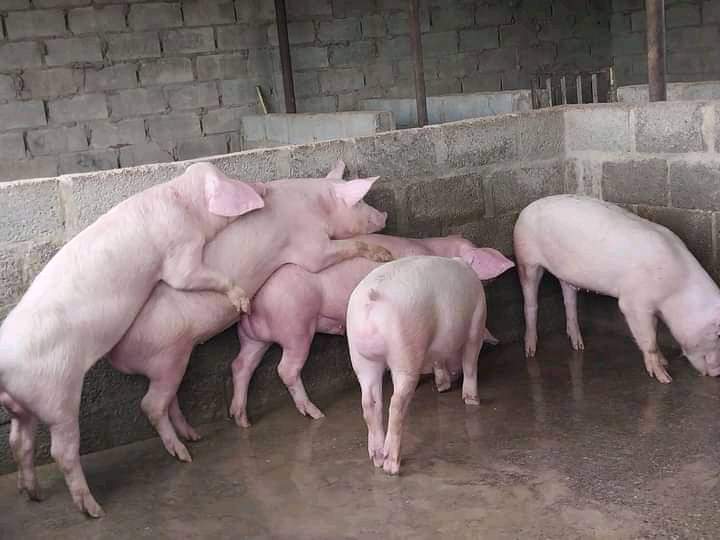1. Consumption of pork products is already growing across Africa
Urbanization and economic growth are leading to the increasing presence of international and local fast-food restaurants across our continent.
In addition to the entry of fast-food brands like KFC and Domino’s, supermarket and retail giants Shoprite and SPAR are introducing a range of pork-dominated Western diets to African consumers.
2. Pigs multiply fast
One of the reasons why pig farming is very lucrative is that pigs multiply fast. One sow (a mature female pig) can farrow (give birth to) between 8 and 18 piglets at a time.
The gestation (pregnancy) period for pigs is just four months, and sows can farrow up to two times a year. This means that one sow, which costs about GH¢1500 – GH¢2000, can produce up to 16 – 36 piglets in a single year. These piglets, when up to 2-3 months old, can be sold for GH¢300-500 each! When they reach a market size of 90 kg in nine to eleven months, they can sell for up to GH¢1500 each.
No other farm animals, except chickens, rabbits, and ostriches, can multiply this fast. Pigs grow to market size very quickly because of their amazingly high feed-to-meat conversion ratios. This simply means that for every kilogram of food they eat, pigs produce more flesh (meat) than cattle, goats, and sheep.
3. Pigs are highly adaptable and easy to farm
According to one of our recommended manuals, pigs have over 15,000 taste buds (humans have just about 9,000). This enables them to eat everything humans eat and other stuff like grass, forage, and feed eaten by other animals. Pigs are the best and most efficient animals for converting kitchen waste, garbage, leftover food, and other non-conventional feedstuffs into meat.
Considering the high and rising cost of grains and concentrates used to produce animal and livestock feeds, the ability of pigs to consume a wide variety of foods increases their profit potential as a business. Since they can recycle most materials (which they eat and convert to meat), pigs help farmers reduce feeding costs and waste. Pigs also have a high resistance to diseases (they hardly get sick) and adapt easily to most environments (hot or cold). This makes it possible for pigs to be raised on both a small and large scale.
Due to this adaptability, pigs make great candidates for intensified or diversified agriculture that fits a wide range of budgets. It’s also important to know that pigs do not have sweat glands and have no way of cooling themselves when they get hot. So, to prevent heat exhaustion, pigs raised in the open often wallow in the mud as a way to cool down. A pig’s love of mud is not for the sake of filth or dirtiness; it’s just a basic act of survival. Pigs, by nature, are very clean animals
4. Pigs yield more meat
Despite their ability to convert more feed into body weight (flesh/meat), pigs also produce more meat when they are slaughtered. Unlike cattle, sheep, and goats, which produce between 50 and 55 percent meat from their bodies, pigs can yield up to 70 percent edible meat because they have a much smaller proportion of bones than meat.
In addition to their high meat yields, meat processors and marketers love pig carcasses because they’re easier to handle and package compared to other types of meat.
 TImBia GH Trending News
TImBia GH Trending News





